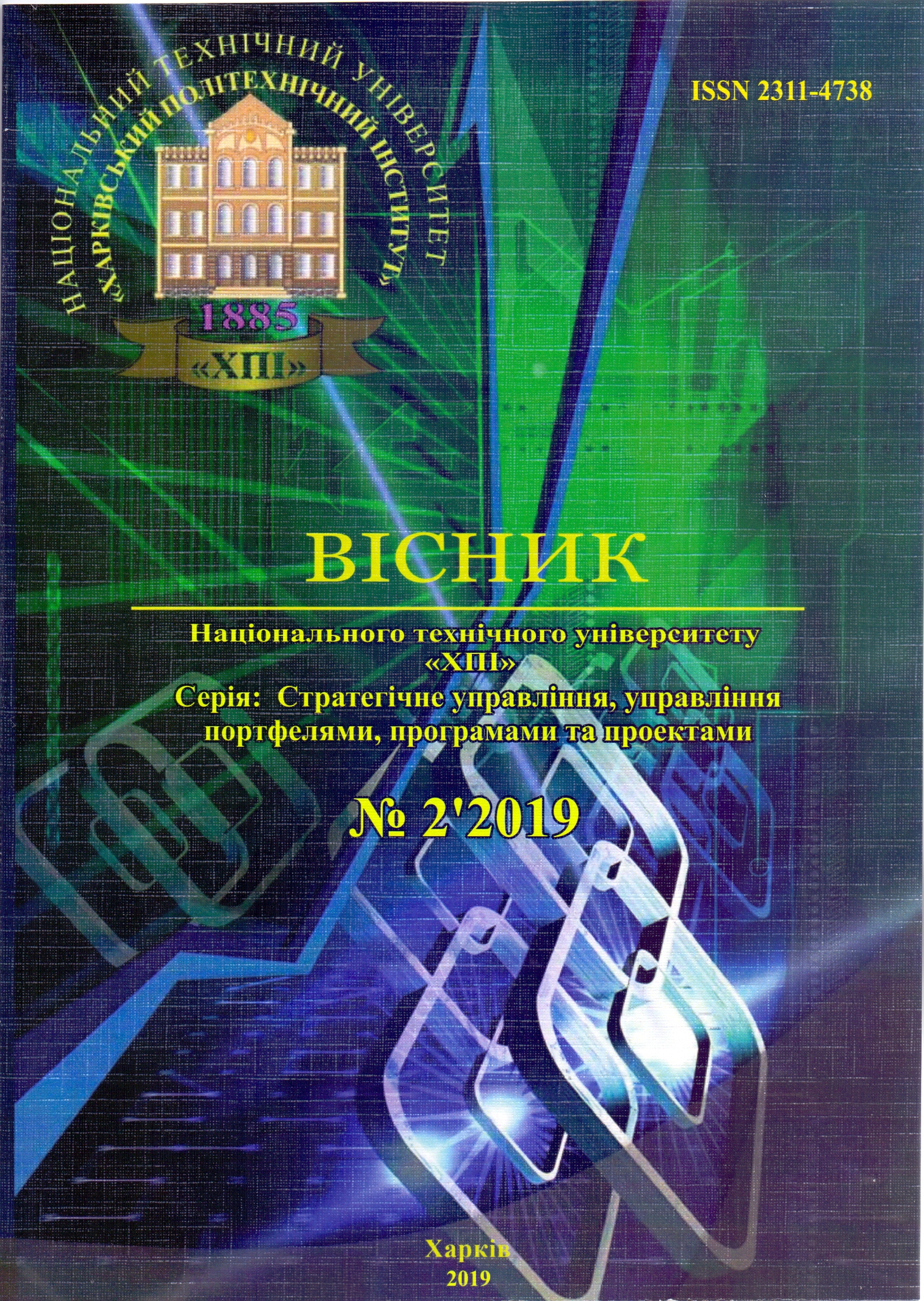BASIC VALUE OF COMPLEX SYSTEMS
DOI:
https://doi.org/10.20998/2413-3000.2019.1327.3Keywords:
Core Value, Sociotechnical System, System’s Condition, Transient ProcessesAbstract
The nature of the basic value is investigated in the following article. Particular attention is paid to the value’s development in the initial stages of the system’s emergence. As a result of the research it was revealed that the basic value, as an indicator, allows to inspect the state of the system at various stages of its life cycle. The author analyzes the approaches to process research of the basic value formation of the scientists in technical and economic fields. Studies have shown that considering given problem through the prism of target management one can get organizational forms that have large production potential. At the same time the obtained forms have the property of combining technical and social systems being in a stable state. The basic value of such complex systems is to be based on its internal needs. The basic value of the socio-technical system was based on a certain state function the increment of which in any process performed by the system in a closed environment is equal to the sum of the effects on the system through resources leading it to the transition from the initial state to the final one. Determining the basic value a number of difficulties were also noted one of which is an increase of the error of the parameters defining the location of the system when it is at the stability limit. The basic value is investigated as the primary component of the new socio-technical system as well as the nature of the transition processes of the system in accordance to the use of internal and external resources. It is determined that internal and external resources determine the potential of the system and the possible dynamics of its development. One of the methods for measuring the basic value of the system is defined, in which the isolated system changes its state through resource exchange. One of the conclusions shows that the basic value does not depend on the choice of the previous state but depends on the resources that tranport it into this state.References
Richard T. Novaya povedencheskaya ekonomika. Pochemu lyudi narushayut pravila traditsionnoy ekonomiki i kak na etom zarabotat [New behavioral economics. Why do people break the rules of the traditional economy and how to make money on it]. Moscow, Eksmo, 2017. 368 p.
Real Social Dynamics: The Blueprint Decoded. Tyler Durden, 2010. 134 p.
Markets of One: Creating Customer-unique Value through Mass Customization. Gilmore James H., Pine Joseph. Harvard: Harvard Business School Press, 2000.
Boyko E.G. Sozdanie korporativnoy sistemyi upravleniya proektami dlya proektno-orientirovannogo predpriyatiya na baze tsennostnogo pohoda [Creating a corporate project management system for a project-oriented enterprise based on the value approach]. Zbirnik naukovih prats «Upravlinnya rozvitkom skladnih sistem» [Collection of scientific works "Managing the development of complex systems"], 2014. Kiyiv, no. 19, pp. 12-16.
Strategic Brand Management: New Approaches to Creating and Evaluating Brand Equity. Kapferer Jean-Noel. New York: Free Press, 1994.
Schwartz, S. H. An Overview of the Schwartz Theory of Basic Values. Online Readings in Psychology and Culture. 2012, no. 2(1). https://doi.org/10.9707/2307-0919.1116
Feather, N. T. Values, valences. and choice: The influence of values on the perceived attractiveness and choice of alternatives. Journal of Personality and Social Psychology. 1995, no. 68, pp. 135-1151.
Leontev D.A. Tsennost kak mezhdistsiplinarnoe ponyatie: Opyit mnogomernoy rekonstruktsii. Sovremennyiy sotsioanaliz. Sbornik statey. M, 1998.
Atamanchuk G.V. Teoriya gosudarstvennogo upravleniya. Kvpc lektsiy [Theory of Government. Lecture course]. Moscow.: Yurid. lit., 1997. 400 p.
Kliland D., King U. Sistemnyiy analiz i tselevoe upravlenie [System analysis and target management]. Moscow. 1974
Chimshir V. I., Baryishnikova V. V., Teslenko P. A., Fesenko T. G. Masshtabiruemost sotsiotehnicheskih proektov. Upravlenie proektami i razvitie proizvodstvom: Sb.n.tr. Lugansk: izd. VNU im. Dalya. 2016, no. 1(57), pp. 15-21.
Dykha, M. V., Tanasiienko, N. P., & Kolisnyk, G. M. Ensuring of labor productivity growth in the context of investment and innovation activity intensification. Problems and Perspectives in Management, 2017, no. 15(4), pp. 197208. http://dx.doi.org/10.21511/ppm.15(4-1).2017.04
Saaty, T. L. Decision Making for Leaders: The Analytical Hierarchy Process for Decisions in a Complex World. Belmont, California: Wadsworth, 1982.
Mardani, A. et al. Multiple criteria decision-making techniques and their applications – a review of the literature from 2000 to 2014. Economic ResearchEkonomska Istraživanja. 2015, pp. 516-571. https://doi.org/10.1080/1331677X.2015.1075139.
Pangsri, P. Application of the Multi Criteria Decision Making Methods for Project Selection. Universal Journal of Management. 2015, no. 3(1), pp. 15-20. https://doi.org/10.13189/ujm.2015.030103
Vitlinskyi, V. V., Verchenko, P. I., Sihal, A. V., Nakonechnyi, Ya. S. Ekonomichnyi ryzyk:ihrovi modeli. Kyiv:KNEU. 2002. 446 p.
Downloads
Published
Issue
Section
License
Copyright (c) 2019 Valentin Chimshir

This work is licensed under a Creative Commons Attribution-NonCommercial-ShareAlike 4.0 International License.
Our journal abides by the Creative Commons copyright rights and permissions for open access journals.
Authors who publish with this journal agree to the following terms:
Authors hold the copyright without restrictions and grant the journal right of first publication with the work simultaneously licensed under a Creative Commons Attribution-NonCommercial-ShareAlike 4.0 International License (CC BY-NC-SA 4.0) that allows others to share the work with an acknowledgement of the work's authorship and initial publication in this journal.
Authors are able to enter into separate, additional contractual arrangements for the non-commercial and non-exclusive distribution of the journal's published version of the work (e.g., post it to an institutional repository or publish it in a book), with an acknowledgement of its initial publication in this journal.
Authors are permitted and encouraged to post their published work online (e.g., in institutional repositories or on their website) as it can lead to productive exchanges, as well as earlier and greater citation of published work.

